Tanzania's Top Best Places to Visit

The beautiful Mount Kilimanjaro and some of Africa's most well-known national parks can be found in Tanzania. As a result, safaris and other wildlife-related activities are Tanzania's most sought-after activities and the main draws for tourists.
The majority of tourists will be traveling through Dar es Salaam en route to other places like the wilderness. Zanzibar's stunning beaches beckon to those who want to spend some time basking in the sun.
Scuba divers and snorkelers from all over the world travel to Pemba and Mafia islands to see the coral gardens, colorful fish, and crystal clear seas, which are considered to be another type of natural marvel.
Mount Kilimanjaro
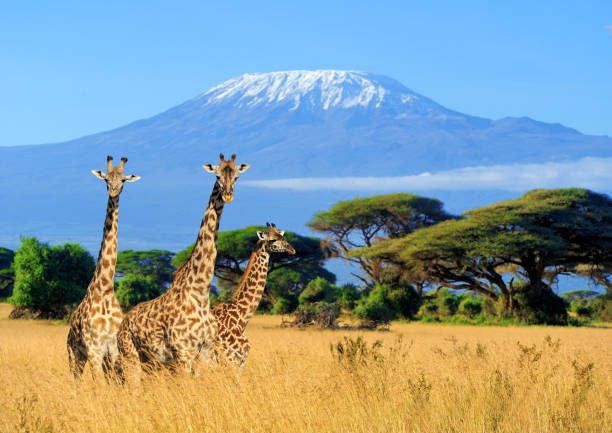
Africa's tallest mountain, Mount Kilimanjaro, is also the highest freestanding mountain in the world. It towers over the African savannah below by about 5 kilometers (3 mi). It is understandable why reaching the peak (5,895m/19,340ft) is one of Africa's top bucket-list adventures. The five to eight-day trek to Uhuru Peak, if you're physically capable, is really rewarding. Even if this isn't your cup of tea, staying in Moshi or Arusha may still allow you to experience this iconic site in all its splendor. The snow-capped peaks are frequently briefly visible at sunrise and evening, despite being usually hidden by clouds.
Tanzania's most famous image is Mount Kilimanjaro (5,895 m). Unlike other parks in northern Tanzania, people visit Mount Kilimanjaro National Park more for the opportunity to admire the stunning snow-capped mountain and, for many, to attempt the ascent. Although Mount Kilimanjaro may be climbed year-round, the optimum time to do it is from late June to October, when the weather is dry.
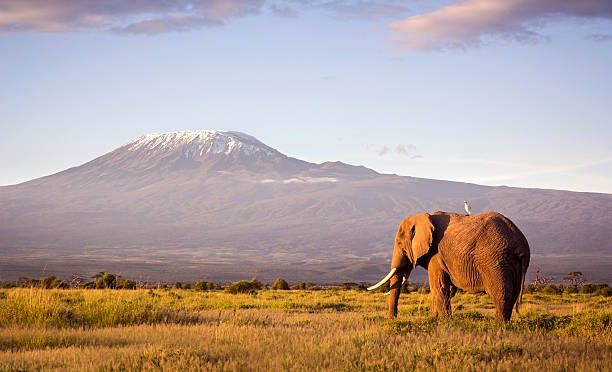
Over a million years ago, volcanic action in the Rift Valley built Kilimanjaro, a World Heritage Site. Shira, Kibo, and Mawenzi are three volcanic cones that formed around 750,000 years ago. Uhuru Peak atop Kibo, one of the Seven Summits of the globe, is the highest peak.
From farming on the lower level, the mountain rises to a rainforest, an alpine meadow, and finally a lunar environment at the peaks. Buffaloes, leopards, monkeys, elephants, and eland live on the slopes of the rainforest. Bird watchers will discover a profusion of raptors in the alpine zone. The government approved a plan to construct a cable car on Mount Kilimanjaro in late 2020. It would lift guests 3,700 meters above sea level if it were built.
Serengeti National Park
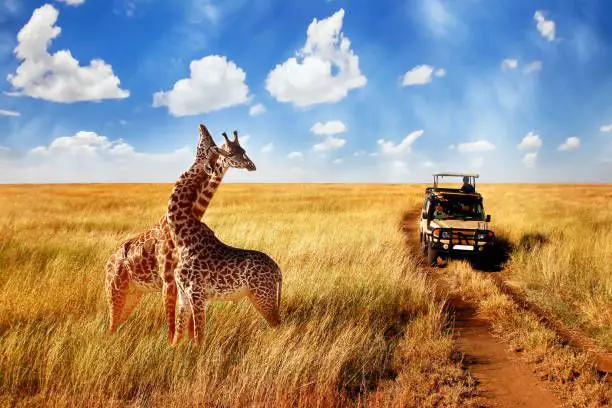
Tanzania's Northern Safari Route is built around Serengeti National Park. It serves as the setting for one of the most incredible animal spectacles in the world, the 2 million-strong wildebeest, zebra, and gazelle migration. Big cats are always nearby, and there aren't many safari locations where lions and cheetahs are so easy to spot. While it might occasionally feel a touch crowded in the Seronera area, a safari in the Western Corridor or Mara River region offers a more secluded experience.
Millions of animals inhabit or pass through the huge, treeless plain that is Serengeti National Park in quest of new grasses. Although the yearly wildebeest migration is what makes the Serengeti renowned, you may also observe the Big Five and close to 500 different bird species there.
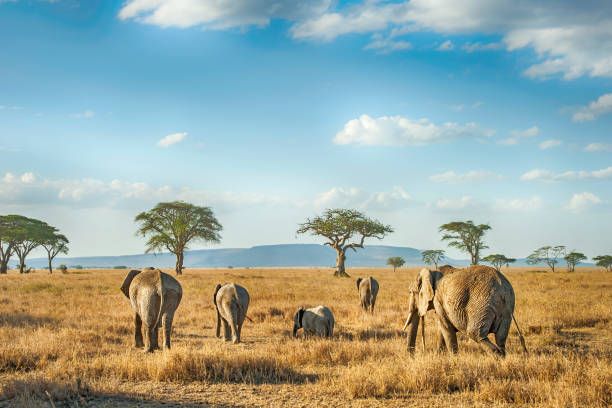
Tens of thousands of tourists visit Tanzania's second-largest national park, the Serengeti, each year. In Serengeti National Park, June through September are the finest months for observing wildlife. The coldest time of year is from June to October, and the rainy season lasts from March to May. In May or early June, more than 1.5 million wildebeest and tens of thousands of zebra and gazelle embark on their yearly migration. One of nature's most stunning spectacles, this migration serves as the main attraction for many visitors.
Zanzibar Beaches
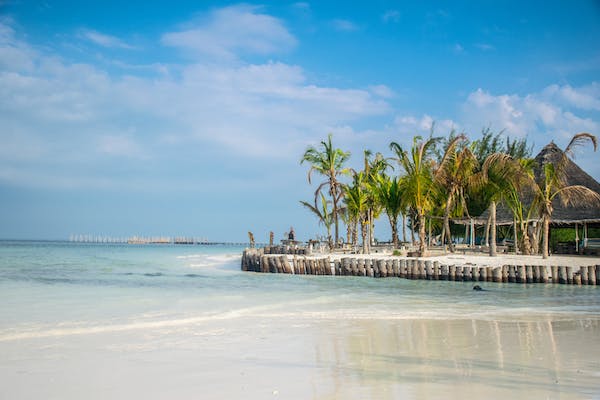
East Africa's famed Spice Island, Zanzibar, is located in the Indian Ocean off the coast of Tanzania. This is the ideal post-safari hideaway where you can unwind for a few days on a beautiful beach with a good book or an energizing cocktail. The pleasantly warm waters and protective reefs make for the ideal swimming environment. Though it is a popular beach vacation spot, Zanzibar offers much more. Explore the countryside of Zanzibar on a spice tour, go diving at the Mnemba Atoll, learn about Swahili culture in the old Stone Town, and search for Zanzibar red colobus monkeys in Jozani Forest. Visit Forodhani Gardens' night market to mingle with the locals and indulge in some delectable seafood.
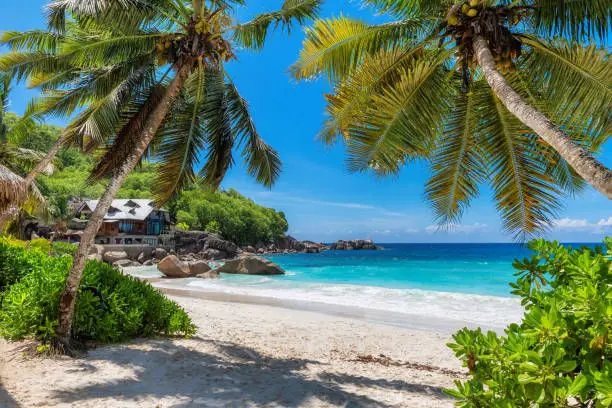
Zanzibar, commonly known as Unguja, is an important tourist destination in Tanzania and is well-known for its stunning beaches. This island, which is a part of the Zanzibar archipelago, which also includes the islands of Pemba and Zanzibar, offers some of the nicest beaches in the entire world. Depending on which side of the island you are on, the surf is different, but tourists will still discover smooth white beach, clear shallow water, and traditional boats bordering the shore.
In the center of Zanzibar sits the historic city of Stone Town, which is renowned for its old Arabian mansions, little passageways, and a bustling port.
Ngorongoro Crater

The Ngorongoro Crater is the world's largest intact caldera and was once a powerful volcano. Animal life abounds on the 260km2/100mi2 crater floor, which is enclosed by tall crater walls. The endangered black rhino and the other members of the Big Five are all readily visible. The highest population of lions and spotted hyenas in the world can be found in this special reserve. At Lake Magadi, the latter can occasionally be seen pursuing flamingos. Then there are the massive bull elephants with gigantic tusks, which are uncommon elsewhere in East Africa.
Ngorongoro Crater is positioned halfway between Lake Manyara and the Serengeti. One of the most well-liked places to see wildlife in Tanzania is Ngorongoro Crater. Numerous species are attracted to this enormous volcanic crater because it always has water available, preventing them from traveling.
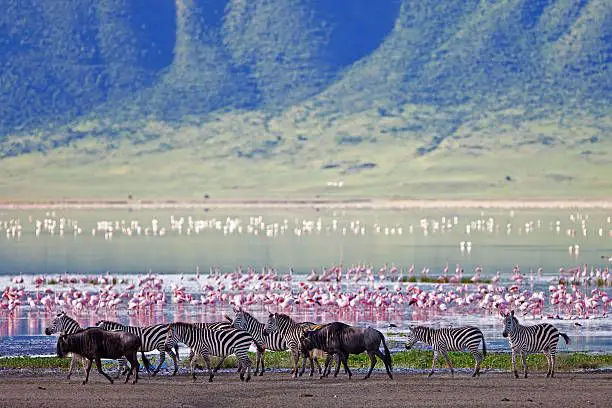
The main reasons people visit this place are to see big animals and to observe birds. Thousands of creatures, including lions, elephants, rhinos, Thomson's gazelles, and buffaloes, can be seen on the crater floor, but more than half of the animals that live in the Ngorongoro Crater are wildebeests and zebras.
The best places for bird watching are near Lake Migadi, where groups of flamingos congregate in the shallows. Hippos are pleased to spend the day submerged and the evenings grazing on the adjacent grass.
The Ngorongoro Crater, which is around three million years old, is the world's largest preserved ancient caldera. Before it erupted and fell, the Ngorongoro volcano was among the tallest mountains in the world.
Lake Manyara National Park

In addition to its Rift Valley soda lake, grassy floodplains, rich groundwater forest, dense acacia woodland, and steep mountain sides, Lake Manyara National Park is home to an astounding range of habitats. Elephants are common, blue monkeys and olive baboons dwell permanently in the jungle.
The landscape of Lake Manyara National Park is made up of wetlands, meadows, and forests. Two-thirds of the park is submerged in water, and Lake Manyara is home to a variety of birds, including thousands of flamingos during specific times of the year. The abundance of elephants, lions that can scale trees, and hippos that may be seen in Lake Manyara Park at a much closer range than in other parks are its main attractions. The world's highest population of baboons resides in this park.
The most popular activities in Lake Manyara National Park include bird watching, wildlife drives, canoeing (when the water is high enough), and mountain bike excursions.
Tarangire National Park

The 1970-founded Tarangire National Park is an excellent place to see animals. The greatest time to go is during the dry season, which is from July to September, when animals congregate near the river.
Tarangire National Park hosts one of the biggest concentrations of migratory wildlife throughout the dry season. The lagoons are overrun by wildebeest, zebra, buffalo, impala, gazelle, hartebeest, and eland. The park is renowned for several other things, including the abundance of elephants there and the baobab trees that dot the green landscape.
With more than 300 kinds of birds documented in Tarangire, the park is great for birding. Buzzards, vultures, herons, storks, kites, falcons, and eagles are some of these species.
Mafia Island

Visitors to the Mafia Island Marine Park-protected underwater realm include divers and snorkelers from all around the world. The finest weather on Mafia Island is from May to October, but the best diving conditions are from October to March. There is a lot of rain between March and April.
Coral gardens, an abundance of fish species, and a laid-back diving environment may all be found at Mafia Island Marine Park. In the area, you can witness numerous birds and more than 400 different kinds of fish. Additionally, the green turtle, which regrettably is endangered, has historically bred on Mafia Island.
In particular, tuna, marlin, sailfish, and other big-game fish are commonly caught in Mafia, making it a popular destination for deep-sea fishing. The 8th or 9th century witnessed the arrival of the first settlers on this idyllic island, but it wasn't until the 12th to the 14th century, when Mafia assumed greater significance as a trading hub for East Africa.
Pemba Island

Among the Zanzibar archipelago's islands, Pemba Island is the furthest north. There are a lot of desert islands near Pemba, and the Indian Ocean is home to some of the best scuba diving there, with unmatched visibility. In the underwater refuge, you can find sea fans, coral gardens, and colorful sponges. A well-liked starting point for scuba divers is Chake Chake, the island of Pemba's capital and largest city.
Pemba has a more relaxed attitude than Zanzibar because it is less frequently visited. The island has become well-liked among mountain bikers who are lured to the 1,000-meter peaks and is rugged with deep valleys. Misali Island Beach is a must-visit location nearby. On a tropical island that is uninhabited, there is a stunning white sand beach.
The juju traditions of medicine and magic are practiced in Pemba, which is also a significant producer of cloves worldwide. To learn from the voodoo and traditional healers or look for a cure, people travel from all across East Africa.
Stone Town

Little has changed in the past 200 years in Stone Town, the center of Zanzibar's culture. The opulent old Arabian mansions that line the curvy lanes and winding streets give the city its distinct appeal. In the 19th century, when Zanzibar was one of the most significant Swahili trading towns in the Indian Ocean, the majority of the homes in Stone Town were constructed. Many of the homes' beautifully carved, bras-studded wooden doors will catch the attention of visitors.
Many of Stone Town's famous landmarks have been brought back to their former splendor as the oldest continuously inhabited Swahili city in the world. Several of the old structures are now museums and tourist destinations. A few intriguing antique churches with historical significance can be found throughout the town.
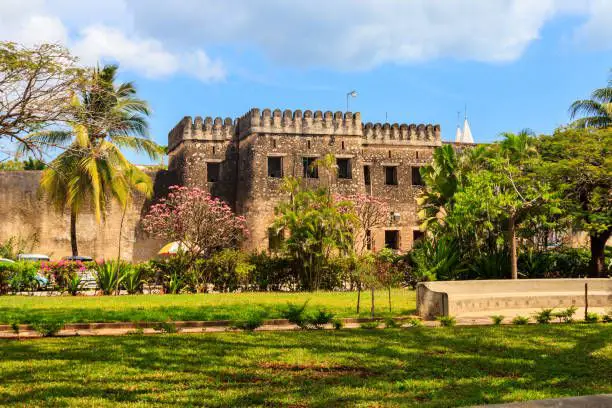
The Darajani Market, Beit el-Amani, City Hall, and the Anglican Cathedral are all located in the old Stone Town region, which may be reached by strolling down Creek Road. The Forodhani Gardens, the Old Dispensary with its carved wooden balconies, the ancient residence of the sultans known as Beit el-Sahel or the People's Palace, the Hamamni Persian Baths erected in 1888, and the Old Fort, Stone Town's oldest building, are some of the other major attractions.
Arusha National Park

The Mount Meru forest, the Ngurdoto Crater in the southeast of the park, and the Momella Lakes, a collection of seven crater lakes, are among the many habitats found in Arusha National Park, which is smaller than most in Tanzania. In the surrounding forest, it is simple to see black and white Colobus monkeys, while warthog, zebra, and buffalo herds can also be seen roaming around on the crater's marshy floor. Numerous resident and migrant waterbird species can be found in Momella Lakes. In addition to climbing Mount Meru, tourists travel here to see the local fauna.
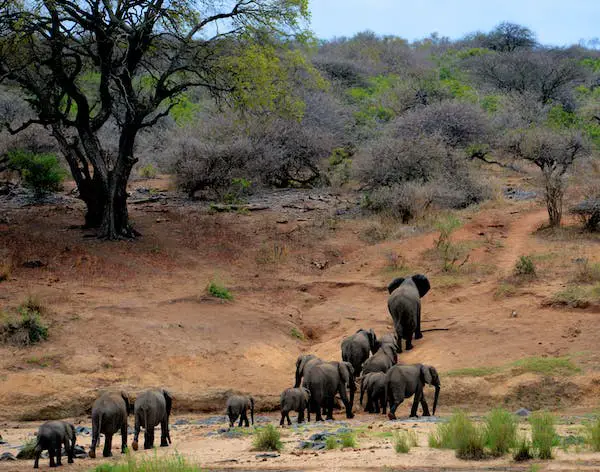
Tanzania's second-highest mountain, Mount Meru, is one of Africa's most stunning volcanoes. A thin slope that leads to the peak offers breathtaking views of the volcanic cone that is located in the crater at a height of several thousand feet below. Although there is a hard elevation, the route also travels through parkland, a forest, a large area of heather, and moorland.\
Tanzania's second-highest mountain, Mount Meru, is one of Africa's most stunning volcanoes. A thin slope that leads to the peak offers breathtaking views of the volcanic cone that is located in the crater at a height of several thousand feet below. Although there is a hard elevation, the route also travels through parkland, a forest, a large area of heather, and moorland.
Selous Game Reserve

The Selous Game Reserve is Africa's biggest game reserve. It was created in 1922 and takes about 5% of all of Tanzania. Undeveloped, densely forested, and containing a number of steep cliffs, the southern region is a banned zone. The region north of the Rufiji River is the only one open to travelers. The Selous Game Reserve contains extensive expanses of open grassland, woods, rivers, hills, and plains in this region. July through October is the ideal period for travel.
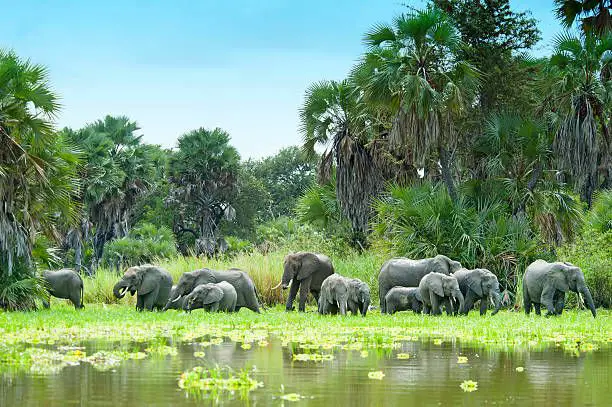
With the biggest catchment area of any river in East Africa, the Rufiji River cuts through the Selous Game Reserve. The reserve's river offers the chance to observe the variety of aquatic creatures, making it a significant feature. In addition to buffalo, antelope, giraffe, warthog, wildebeest, elephants, hippos, and rhinos, there is a wide variety of species to be found, including lions, leopards, cheetahs, and giraffes. Selous has around 350 species of birds that have been identified.
Ruaha National Park

The ideal fusion of varied wildlife viewing, untamed terrain, and wilderness mood can be found at Ruaha National Park. It makes sense why so many fans of Africa enjoy it. Ruaha is a fantastic place to see carnivores. A number of packs of African wild dogs, as well as prides of lions with 20 or more members, leopards, and cheetahs are also present. Large elephant herds and an extremely wide variety of antelope, including as sable, roan, and larger kudu, are among the other wildlife that can be found.
Ruaha National Park surpassed other Tanzanian parks in size in 2008. In addition to having one of Tanzania's highest concentrations of elephants, it is home to sizable herds of buffalo and gazelle. The Great Ruaha River, which flows through Ruaha National Park, is its primary feature and offers breathtaking animal watching along its banks. Through a hydroelectric project at Kidatu, the river also supplies a large portion of Tanzania's electricity.
Ruaha National Park in Tanzania has the fewest visitors, hence the environment there is one of the least altered. Photographers are drawn in particular by the river, breathtaking gorges, and towering trees, while birdwatchers can enjoy over 400 species of birds that are not seen in northern Tanzania.
Lake Victoria

Kenya, Tanzania, and Uganda surround Lake Victoria, the biggest freshwater lake in Africa. Millions of people live near this lake, which feeds the White Nile and generates revenue for them. One of the least frequented areas of the nation is the Tanzanian portion of Lake Victoria, yet the cities of Bukoba, Musoma, and Mwanza contain a variety of attractions.
A few of the islands that are close to Mwanza and Musoma have turned into wildlife sanctuaries. Boat tours or treks can be planned around Lake Victoria, and bird watching and fishing trips are popular adventures.
On the southwest coast of Lake Victoria, there is a park called Rubondo Island National Park that contains a number of additional smaller islands.
Katavi National Park

The isolated Katavi National Park offers pristine wilderness. The massive flood plain, which is divided by the Katuma River and various seasonal lakes, is a defining characteristic of Katavi. Large herds of hippos, crocodiles, and more than 400 different bird species can be seen in the lakes. Hippos during the end of the dry season, when up to 200 attempt to fit into a pool of water, are one of the attractions in Katavi. Male rivalry intensifies, resulting in territorial disputes.
In the dry season, the remaining ponds and streams are filled with herds of giraffes, zebras, lions, impalas, and reedbuck. Thousands of elephants and buffalos congregate in the park as the flood waters recede.
Gombe Stream National Park

Gombe National Park, frequently referred to as Gombe Stream National Park, caters mostly to tourists who want to venture off the beaten path and observe chimpanzees. Known for Jane Goodall's research, this is one of Tanzania's tiniest national parks. Arriving in 1960 with the intention of studying chimpanzees in the wild, this British researcher's efforts eventually led to the creation of the world's longest-running behavioral research project.
Visitors can go on guided tours of the forest to see chimpanzees in their natural habitat. The park is home to a wide variety of primates and mammals. Barbets, starlings, sunbirds, crowned eagles, kingfishers, and palm-nut vultures are just a few of the more than 200 bird species that have been identified in tropical forests.
Other popular activities include swimming and hiking; there is a trail that goes through the forest to a waterfall in a valley.
